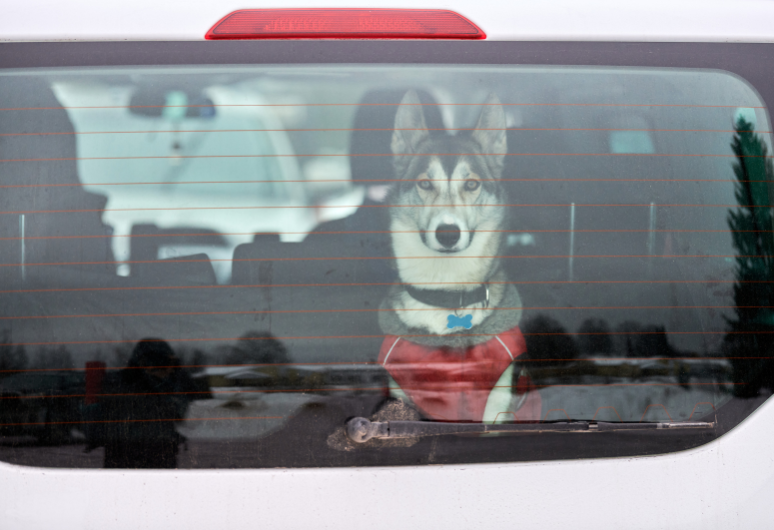
Since the beginning of the Covid-19 pandemic, 23 million US households have adopted pets.
They’ve kept us company through over two years of uncertainty and work-from-home video calls.
And now that summer’s here again – the first one in years we can enjoy with relative safety – many of us want to include our pets in our plans.
Today, we’re talking about road trips, and the best tips for traveling with pets in the car.
1. Take Practice Road Trips
For pets that aren’t used to long car rides, a lengthy road trip might cause distress. To reduce this likelihood, we should prepare our pets beforehand.
Leading up to the trip, we can take our pets on rides, lengthening the duration each time. We can even take our dogs to places they enjoy, so they associate car rides with positive experiences.
2. Use a Travel Crate or Pet Seat Belt
It’s unsafe to let our pets move freely throughout our car, for us and them. They can cause distractions, block our vision, and get underfoot, leading to accidents. Also, if an accident does happen they can be seriously injured.
The best solution is using a crate. Travel crates come in all sizes and can be securely fastened to the backseat. They should be large enough for our pet to comfortably stand up, lay down and turn around.
Crates are also a good option for animals with neck and back injuries. Unlike seatbelts, carriers don’t put an unexpected strain on our pet’s body.
Pet seat belts are also a solid option. They can also be securely connected to the backseat, often directly into the seat belt buckle. This option is good for pets that can sit still, and aren’t too small. Seat belts may put too much pressure on dogs that are very tiny.
3. Pack a Pet Kit
We wouldn’t go on a road trip without our essentials (and probably a few extras), and neither should our pets. We should bring everything our pet needs for a comfortable trip. Pack:
- Food and water
- A bowl
- Poop bags/scoop
- A leash
- Toys/comfort items
- Medication
- Travel and health documents
- Treats
- First-aid supplies
When possible, use bottled water. Like us, when animals drink water from unfamiliar places, it may upset their stomach.
4. Don’t Feed Pets in a Moving Car
To avoid motion sickness, we shouldn’t feed our pets in a moving vehicle. Instead, we should feed them 3-4 hours before the trip. The next meal should be in the evening when we’ve stopped for a break.
5. Don’t Leave Pets Alone in a Hot Car
In hot weather, the temperature in our car can become unsafe for pets. It can reach 100+ degrees, even if the temperature outside is moderate. This can cause organ damage, heat stroke, and death.
Aside from that, many states have laws that allow citizens to break into cars to rescue animals. This can lead to car damage and legal consequences.
Alternatives include:
- Dining on pet-friendly patios
- Finding pet-friendly stores before our trip, so we can plan where to stop
- If we’re traveling with someone, ensuring one person stays with our pet when we leave the car
- Use the drive-through, where possible
6. Get Pet Insurance
Accidents can happen to our pets, and when they do we should be prepared. If our pet needs to go to the vet, we don’t want to be surprised by high medical bills. Before selecting an insurance provider, we should make sure they cover expenses incurred while traveling.
7. Find a Local Emergency Veterinarian
When we get to our final destination (and on stops along the way), we should locate the nearest emergency veterinarian’s office. That way, we don’t need to stress about where to go if our pet has an emergency.
When We Can’t Bring Our Pet
If it’s not possible to include our pets in our travel plans, we may want to consider a boarding facility. We should be selective about where we leave our pets, to ensure they’re time away from home will be as enjoyable as ours is.
Here’s a list of questions to ask boarding facilities before deciding:
- Is it required for all animals to be spayed/neutered?
- Where will our pet sleep?
- Will the facility be staffed overnight?
- When/how often is feeding time?
- Are all pets required to be vaccinated?
- How many bathroom breaks do pets get?
- How many opportunities are there for pets to exercise?
- How much human interaction do pets get?
- What’s the emergency plan?
- Are there fire detectors/smoke alarms/sprinklers?
We should also provide the boarding facility with specific information about our pet’s medical and dietary needs.
Summary
Pets are the best friends we could ask for, so it makes sense that we’d take them on our road trips. For a successful trip, we should make sure they’re healthy, safe, and comfortable.
So, everyone buckle up, and the open road awaits!
Sources:
https://www.today.com/video/how-to-navigate-your-summer-vacation-plans-with-pets-141302341678
https://www.humanesociety.org/resources/what-do-if-you-see-pet-parked-car
https://www.akc.org/expert-advice/health/leaving-a-dog-in-the-car-in-winter/



